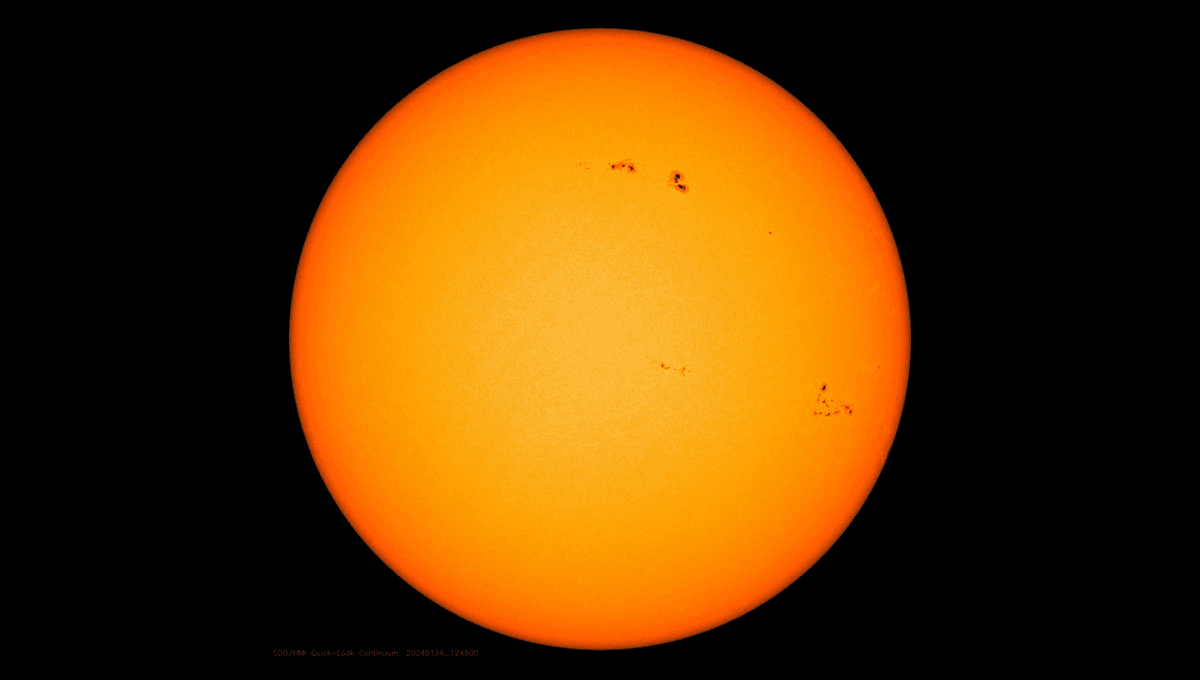
In a rare event, the Sun has simultaneously released two mighty solar flares separated by 500,000 kilometers (300,000 miles).
The last 48 hours have seen remarkable behavior on the Sun, even by the standards of its last, highly active, year. Two sunspots, AR3559 and AR3561, have been filmed flaring simultaneously. The flares do not reach X-class, even together, instead having a combined value of M5.1 (halfway through the second highest energy flare class). Nevertheless, the explosive duet is a rare phenomenon and a sign of the Sun’s current activity.
Rather than a coincidence, the paired explosions are an example of “sympathetic solar flares,” where magnetic loops in the solar corona trigger simultaneous explosions. Astronomers have known about sympathetic solar flares for decades, and analyzed thousands for patterns, but until recently we have lacked the ability to film them in all their glory. Moreover, with the flares sometimes more than 90 degrees apart, it’s often the case that only one is directly visible from Earth.
One of the sunspots responsible, AR3561, has been labeled as hyperactive, having released more than a dozen M-class flares within 36 hours, along with at least seven C-class flares. AR3561 looks smaller and less intensely dark than AR3559. Indeed, in still photographs it doesn’t stand out next to the nearby cluster of sunspots collectively known as AR3556. However, it has developed exceptionally fast, not having been present at the start of the week, and is accompanying that growth with flares almost every hour. Solar astronomers say its magnetic complexity indicates an increased potential for more, and possibly more powerful, flares to come.
Some of the flares have brought coronal mass ejections with them. According to Spaceweather.com, none of these are large enough, or approaching Earth directly enough, to be expected to produce major impacts here. However, minor geomagnetic storms (G1-class) are considered possible over the next three nights from glancing blows to Earth’s magnetosphere, particularly on Thursday and Friday. This is likely to be accompanied by auroral activity, but probably only at high latitudes.
The combined flares, the majority of whose energy came from AR3359, managed to produce moderate radio blackouts, according to NOAA, mostly affecting the southern hemisphere.
After the unexpected strength of solar activity last year, debate raged as to whether solar cycle 25, initially expected to peak in 2025, had reached its maximum early, or if this year would be bigger still. The last five months of 2023 had fewer sunspots than June-August, favoring the early peak theory. However, AR3561 appears to be trying to change that story on its own, and this year may be the most active we’ve seen for decades.
Source Link: Watch Two Connected Solar Flares Explode Half-Way Across The Sun From Each Other